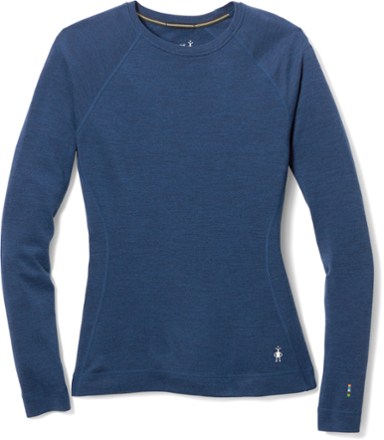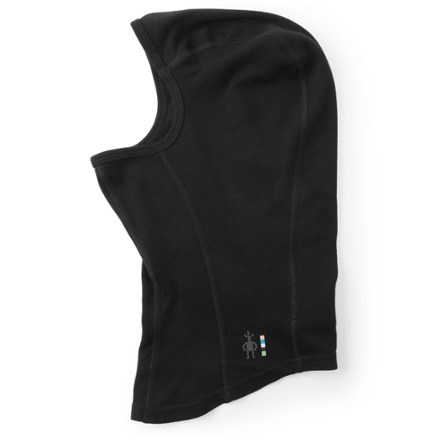
Your Best Backpacking
Sleep System:
Here's What Works
By Diane Spicer
Reading about the best backpacking sleep system?
That means you've graduated from day hiking to overnight or longer hiking trips.
Congratulations!
But now you've got some hiking problems to solve.
One of the most important:
- How to keep yourself warm through the night. Regardless of the type of shelter, and the level of moisture, which surround you. A big job!
And that's why you found this page:
- To choose the best backpacking sleep system for your hiking style.
Skip down to backpacking sleep system components
Let's define a
backpacking sleep system
Your sleep system in your bedroom is your bed + bedding.
Breaking it down into individual components yields your unique sleep system:
- silk or cotton or flannel sheets, soft or hard pillow, down or cotton comforter.
Same idea goes for your backpacking trip, except you're hauling around your sleep system on your back (you did realize this, no?).
AND it needs to be warm and comfortable, just like at home, but also:
- lightweight
- moisture resistant
- keeps you warm when wet
- dries quickly to avoid adding weight to your load
- easy to deploy and pack up
- compressible
- easy to launder and maintain, both on the trail (your bedtime clothing) and back home
Geez, who knew, right?
But hang in here with me, and we'll get you on the trail to the perfect backpacking sleep system by the end of this page.
You have my permission
You have my permission to run away from anyone who tells you that there is one right answer to the "What is the best backpacking sleep system?" question.
You've got to find what works best for you!
And just so you know
I don't waste my precious time or money on gear that doesn't work.
Neither should you.
And I'm willing to bet cold, hard cash that you value your sleep every bit as much as I do.
That's why I'm going to put the best of the best outdoor sleep system components in front of you.
- Some of the links are affiliate links. It costs you nothing extra to buy your hiking gear from these fine outdoor companies. It sends a small commission to Hiking For Her.
Ready to generate some Zzzzzz's?
Hey, wait! Not quite yet!
You've got some reading to do ;)
Best backpacking sleep system
components
Your sleep system for a backpacking adventure has a few main components.
You'll customize the system for your particular trail plans.
Here they are:
- body heat containment unit: sleeping bag, quilt, bivy
- liner for extra warmth
- sleeping pad if you're a ground sleeper
- hammock if you're not and have access to trees
Hammock sleepers have a few more choices to consider:
- top -vs- bottom quilts
- rain cover
- These will be covered in a separate article, coming soon, so check back.
Some hikers consider warm clothing, a hat, a pillow, and a stuffed bear (not the live kind!!) as vital components of their sleep system.
- And they wouldn't be wrong!
Let's take a peek at each of these parts of a backpacking sleep system. I'll share recommendations for what works for me.
Backpacking sleep system:
choosing your bag
or backpacking quilt
Did you car camp or go on sleepovers as a kid?
Then you know the drill:
- crawl between two layers of fabric
- zip up the bag
- scrunch yourself up in a ball as your body heat warms up the inside
And you probably remember this, too:
- a squeaky, slippery plastic blow up camping mattress beneath your sleeping bag
Now, as a backpacker, you need a lot more than that for sleeping comfort.
And as a woman, you sleep a little colder than your male trail buddies.
Time for a little reading, beginning with your body heat containment unit of choice:
- Best backpacking sleeping bag
- Best backpacking bag liner
- Why use a backpacking quilt?
- Best backpacking quilt
- Sleeping bag -vs- quilt
- OutdoorVitals backpacking quilt review
 Soft, cozy, inviting, but also water repellent, durable and compressable - that's what you're going for in a sleeping bag or backpacking quilt
Soft, cozy, inviting, but also water repellent, durable and compressable - that's what you're going for in a sleeping bag or backpacking quilt
The female angle to staying warm
at night on a backpacking trip
Uncomfortable fact of backpacking life: Women are cold sleepers.
Except for that wonderful period of time when you get to "pause".
Think of menopause as a backpacking bonus.
- You will wallow in your own heat, albeit for intermittent chunks of time that you can never predict.
But extra heat can't be a bad thing in a sleeping bag. Can it?
- Tips for menopausal hikers, right here
Here's a good tip:
- A sleeping quilt gives you the option of sticking your arms and legs out during a flash.
- You'll have to wrestle with your sleeping bag zipper otherwise.
More tips for women backpackers
Having backpacked through my teens and come out the other side of menopause, I know a few things about body heat.
Here are a few tips on choosing your "body heat containment unit":
If you're an exceptionally cold sleeper, you want a sleeping bag with extra features. Like a contoured footbox to trap heat around your toes and ankles.
Or buy a bag or quilt that promises lower temperature ratings. Even if that seems too extreme for the conditions you're facing.
- There's no shame in sleeping in a 20F bag when it's 45F at night.
- No one needs to know you need more fill power to keep your toes warm.
You'll also appreciate a sleeping bag or quilt that cinches down snugly around your neck. You want to prevent cold drafty episodes that wake you up.
Want to go ultralight without sacrificing comfort and warmth? Read my sleeping bag review of the Sea to Summit UL Flame sleeping bag here.
And consider this
You can also learn to use clothing as a deliberate part of your core warmth strategy.
Keep reading for tips, or skip down now.
What lies beneath:
choosing the best sleeping pad
There are many types of sleeping pads on the market.
They have various characteristics that might be important to your sleep comfort:
- self inflating versus "huff & puff"
- insulated or not
- ultralight
- inexpensive or not
Start your reading here:
Backpacking sleeping pad recommendations

When I need to go fast and light but want to stay warm at night, I use this Big Agnes Q-Core Insulated SLX sleeping pad.
- I love its small lightweight footprint and cushiony warm sleep experience.
What else belongs in a
backpacking sleep system?
Clothing and head covering, plus a pillow is completely reasonable to add to a sleep system.
Discover how to choose the best backpacking pillows here.
Your goal: to achieve a good night's sleep so you can hit the trail hard in the morning.
- Optional: teddy bear
- No judgment, I promise!
Do they make inflatable cuddly bears? Hmm... business opportunity?
Want warm feet while you sleep?
Cover your head!
The fastest way to a warm body is pulling on a hat.
A female hiker should have a repertoire of hiking hats, and sleeping is no different than the trail.
- As conditions change, so should your hat
Over the years, here's what I've noticed works really well to fall (and stay) asleep in:
- An inexpensive, cozy fitted fleece beanie for summer, like this one from REI Co-op
- A wool cap lined with fleece for spring and fall. Try this Arc'teryx Bird Head toque - a good balance between warmth and comfort.
And then there's the nuclear option.
In other words, staying as warm as inside the belly of a star where nuclear reactions create massive heat.
Here's your best choice:
- A balaclava
Your options for this complete coverage of head and neck are fleece and merino wool, just as with your hat!
Backpacking pajamas a.k.a. long undies as pjs,
an important part of a backpacking sleep system
I've found a good hack.
A lightweight but warm pair of long underwear added to my sleep system serves me well at night.
I only wear this clothing inside the tent.
- No food odors in bear country
- No sweat stains or odors in my nostrils as I fall asleep
- (Relatively) clean and dry to crawl into after a long day of hiking on a multiday backpacking trip
- Feels great against my skin; helps me with full body relaxation so I drift off faster
Here's a great pick:
 Smartwool Merino 150 Base Layer Long-Sleeve Top Smartwool Merino 150 Base Layer Long-Sleeve Top
|
Sizes XS - SL Six color choices Comfy crew neck 87% Merino wool + 13% nylon for moisture wicking, fast drying and coziness |
 Smartwool Merino 250 Base Layer Crew Top - Women's Plus Sizes Smartwool Merino 250 Base Layer Crew Top - Women's Plus Sizes
|
Available in 2X - 3X Two color choices Same specs as above |
Pair this shirt with matching bottoms, and never shiver again.
Still cold?
- Bump it up to the 250 Merino wool version.
Trail tip:
Because I only wear this clothing for sleeping, it has lasted for many, many seasons.
Even if you put yours into regular rotation in your hiking wardrobe:
- Treat this hiking clothing kindly by line drying.
For sweet dreams, remember your pillow
Some backpackers belong to the "I'll just cobble something together from clothing" school of thought.
Don't overlook the importance of a neck that doesn't ache!
Choose a great backpacking pillow with these tips.
Read my review of the Outdoor Vitals ultralight backpacking pillow I use here.
Now you're one giant step closer to the
perfect backpacking sleep system!
Congratulations again! You rock!
Now it's time to start making a shopping list.
And heads up:
As your body ages, your hiking style changes.
So you might will discover that you need to change your sleep system components.
- But you've gotta start somewhere, right?
So get crackin'!
Or risk sleep deprivation from being cold and uncomfortable during the night. That robs you of full enjoyment (and safe decisions) on your backpacking trip.
Ewwwww!
Oh, and one more little thing...
A prepared backpacker
needs to embrace systems
You've got your backpacking sleep system dialed in.
Now turn your attention to how to haul it around a.k.a. choosing your backpack.
And there's one more system: your shelter.
Oops! One more!
- Your clothing layering system
Looks like you've got some more reading to do ;)
- How to size up a backpack
- Best tent types for backpacking
- Outdoor clothing layers (extended size layering tips here)
Enjoy the journey to a well stocked gear locker!
Home page > Best Backpacking Tips >
Best Backpacking Sleep Systems
|
I get emails all the time about what I wear, eat, carry and love to use on the trail. That's
why I provide affiliate links to you: the best gear that I use myself and have seen used by other hikers is instantly
available for your consideration, and the gear company sends a few
pennies per dollar to this reader-supported hiking website. There is no added cost to you! Everyone ends up a winner: Great gear for you, strong gear companies, and more free hiking tips for everyone. Thanks very much for your support. It's warmly and sincerely appreciated. It also helps send these hiking tips to all your virtual trail buddies around the globe. |
 |










